There are crucifixes depicting the suffering of Christ in many places in the capital, and the inscriptions on their pedestals show that our predecessors raised them through significant material sacrifice. In several cases, we find crosses in Budapest that were erected in honour of heroic soldiers who died in the world wars. The material of the crosses is varied; stone dominates the oldest.
The oldest stone cross in the capital, still visible today, stands on Ferenciek Square in Pest, next to the church's main facade, which was built in 1763.
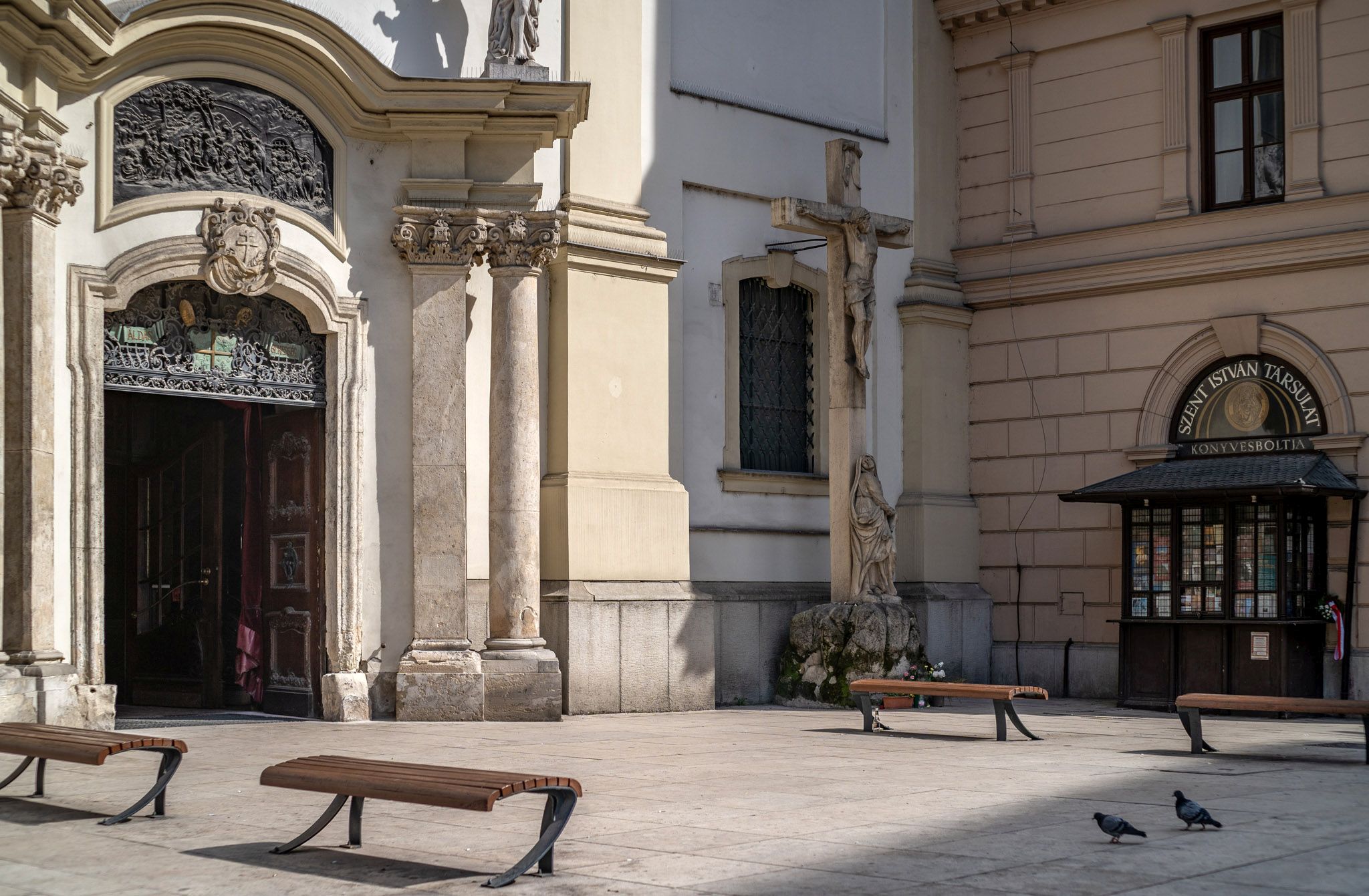 The oldest stone cross in the capital, still visible today, stands on Ferenciek Square (Photo: Balázs Both/pestbuda.hu)
The oldest stone cross in the capital, still visible today, stands on Ferenciek Square (Photo: Balázs Both/pestbuda.hu)
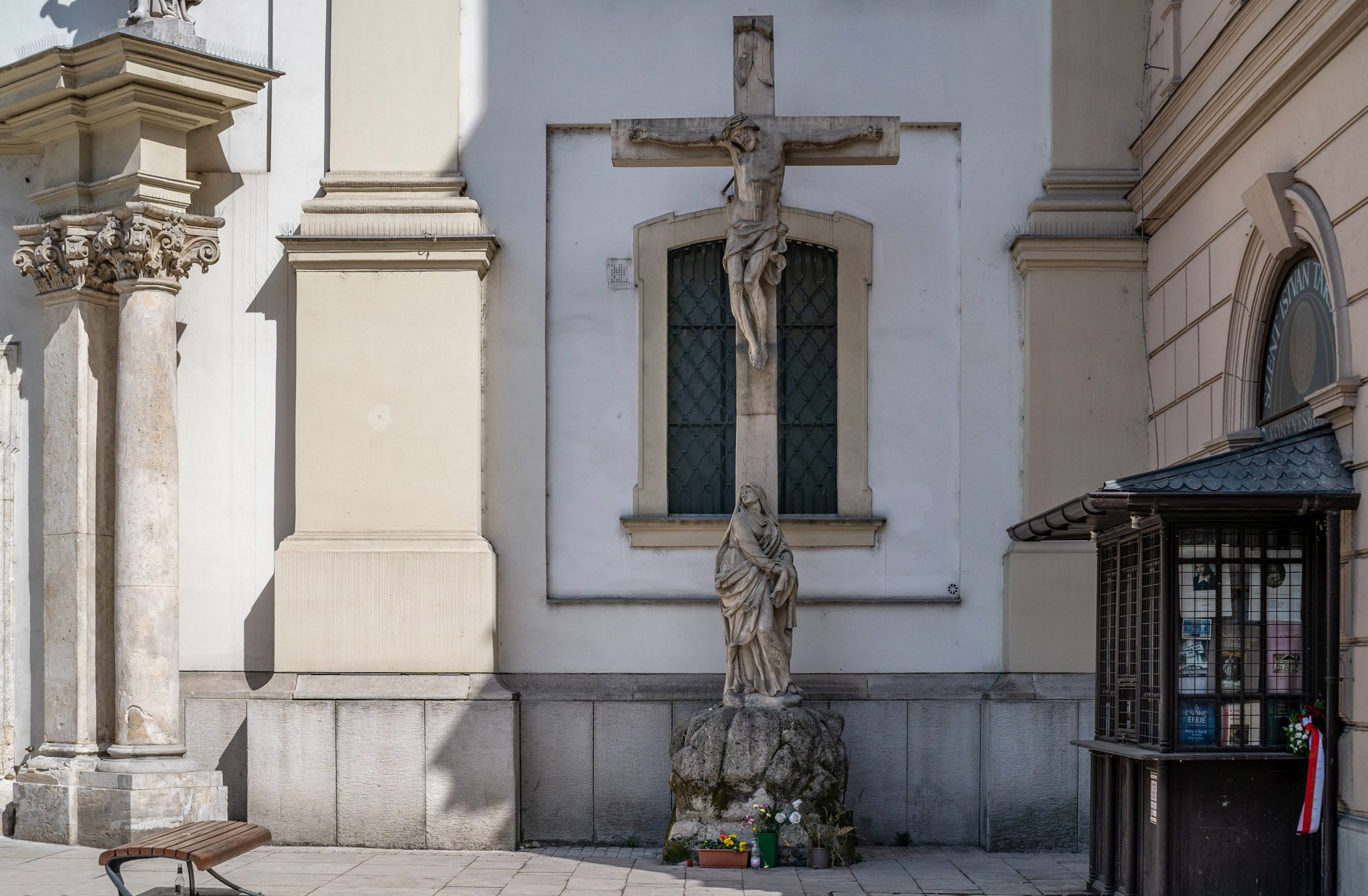
The cross was made in 1763 (Photo: Balázs Both/pestbuda.hu)
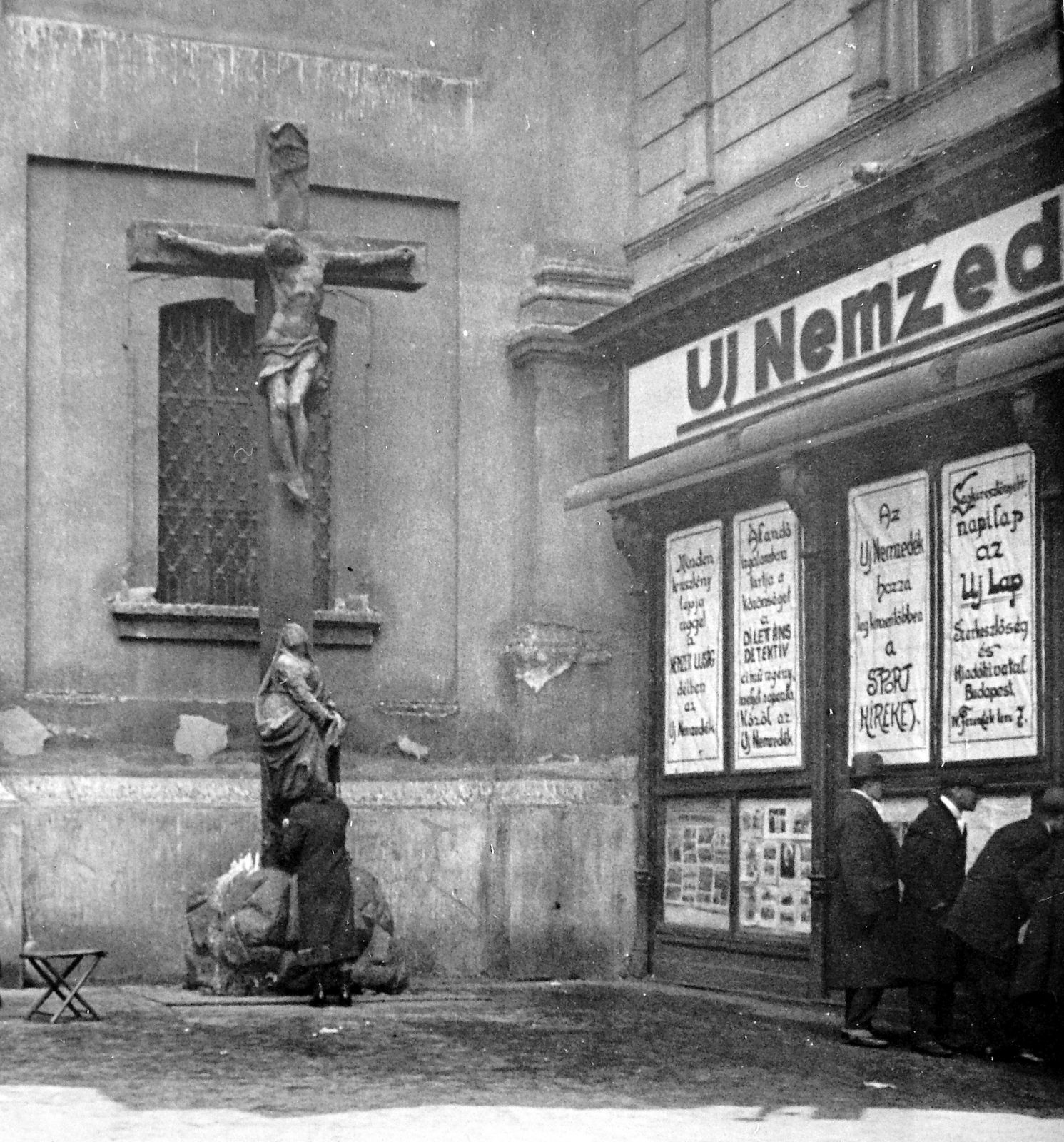
The stone cross on Ferenciek Square to the right of the entrance of the Franciscan Church in the city centre, 1918 (Photo: Fortepan/No.: 6948)
The next in line, by age, is the cross decorated with bunches of grapes in Kőbánya, located at the intersection of Kada Street and Sörgyár Street. Viticulture was prevalent in Kőbánya until the devastating phylloxera epidemic in the middle of the 19th century. The cross was presumably made in 1779 by a master with the initials “H.M.” on a German-speaking winemaker's order.
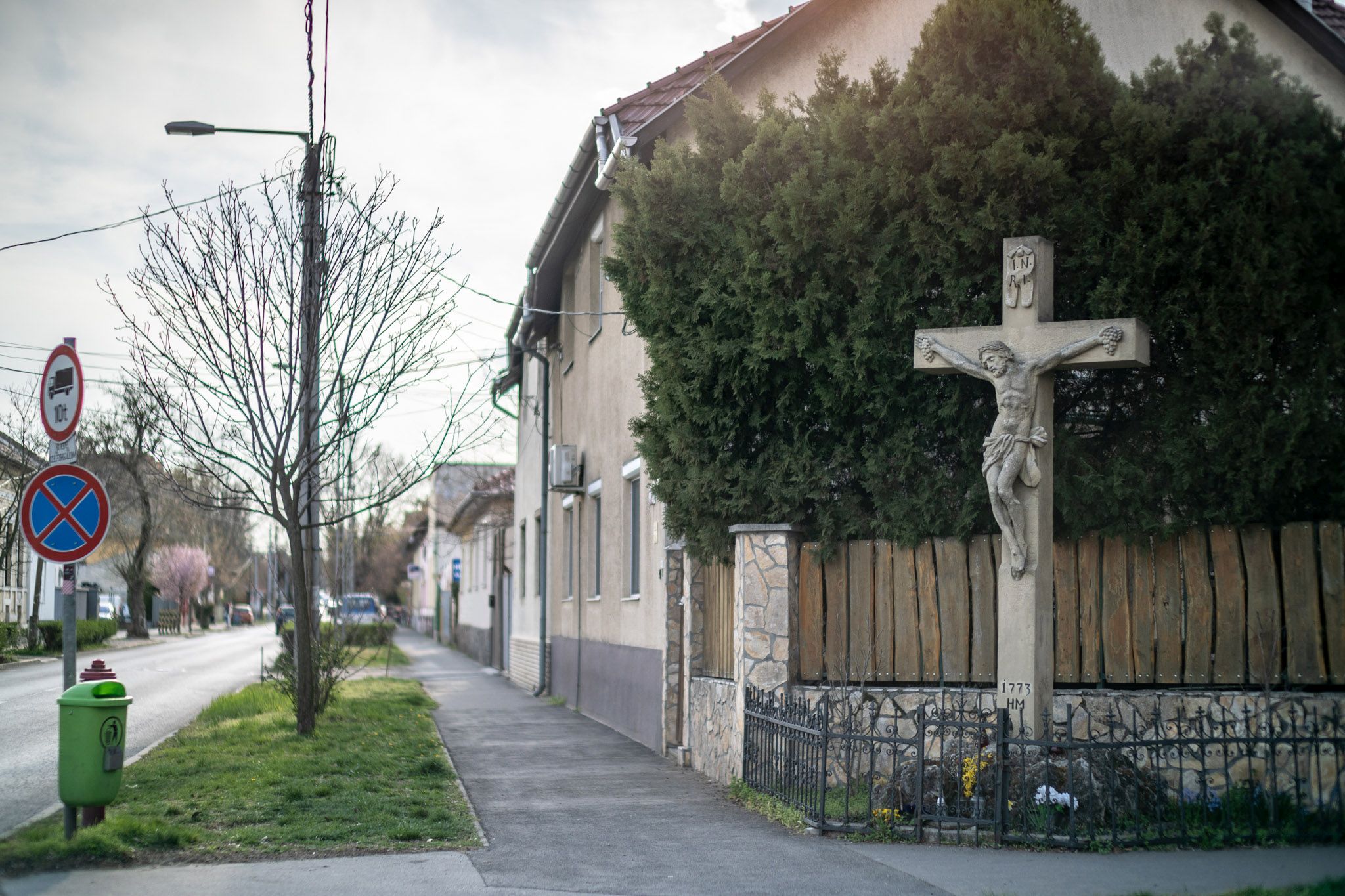 The cross decorate with bunches of grapes in Kőbánya (Photo: Balázs Both/pestbuda.hu)
The cross decorate with bunches of grapes in Kőbánya (Photo: Balázs Both/pestbuda.hu)
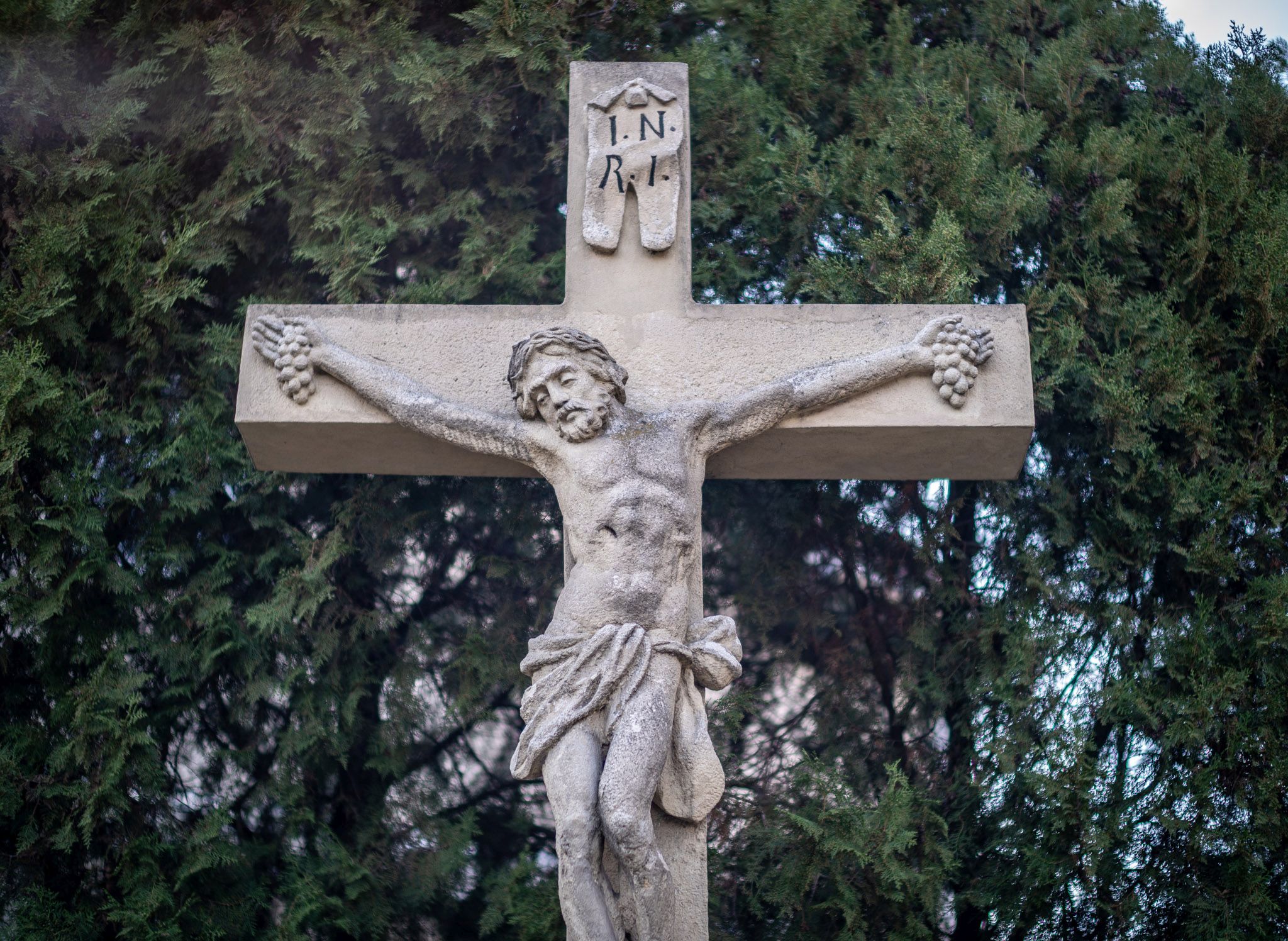
A German-speaking winemaker commissioned the cross in 1779 (Photo: Balázs Both/pestbuda.hu)
Bunches of grapes can be seen on the cross's horizontal beam, at the hands of Jesus, and at the bottom of the vertical beam, at the foot of the Savior. The grape refers to the blood shed on the cross by Christ and reminds us of the words preserved in chapter 15 of the Gospel of John: "I am the true vine."
The next cross was made of stone in 1798 and is located near the main facade of the Rókus Chapel in Józsefváros. Crosses carved of stone or cast of iron from the 19th century can be found in most districts of Budapest.
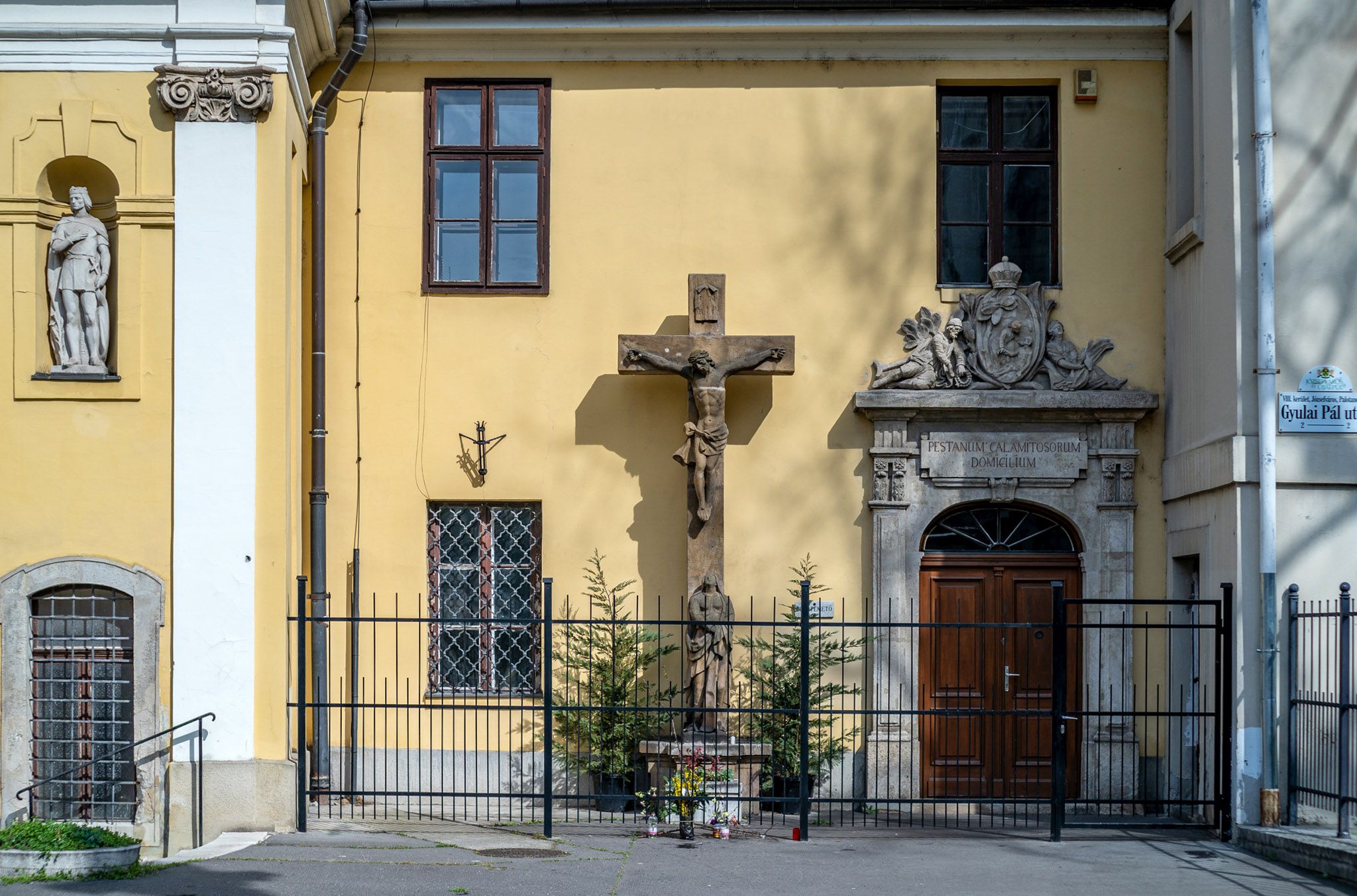
Stone cross at Rókus Chapel (Photo: Balázs Both/pestbuda.hu)
From the second half of the 19th century, crucifixes made of metal and iron spread throughout Pest. Among the tin Christs, the small cross erected in Józsefváros on the corner of Koszorú Street and Tavaszmező Street has long enjoyed high esteem from Catholics in the district, which is proven by the fresh flowers placed at the foot of the Jesus depiction.
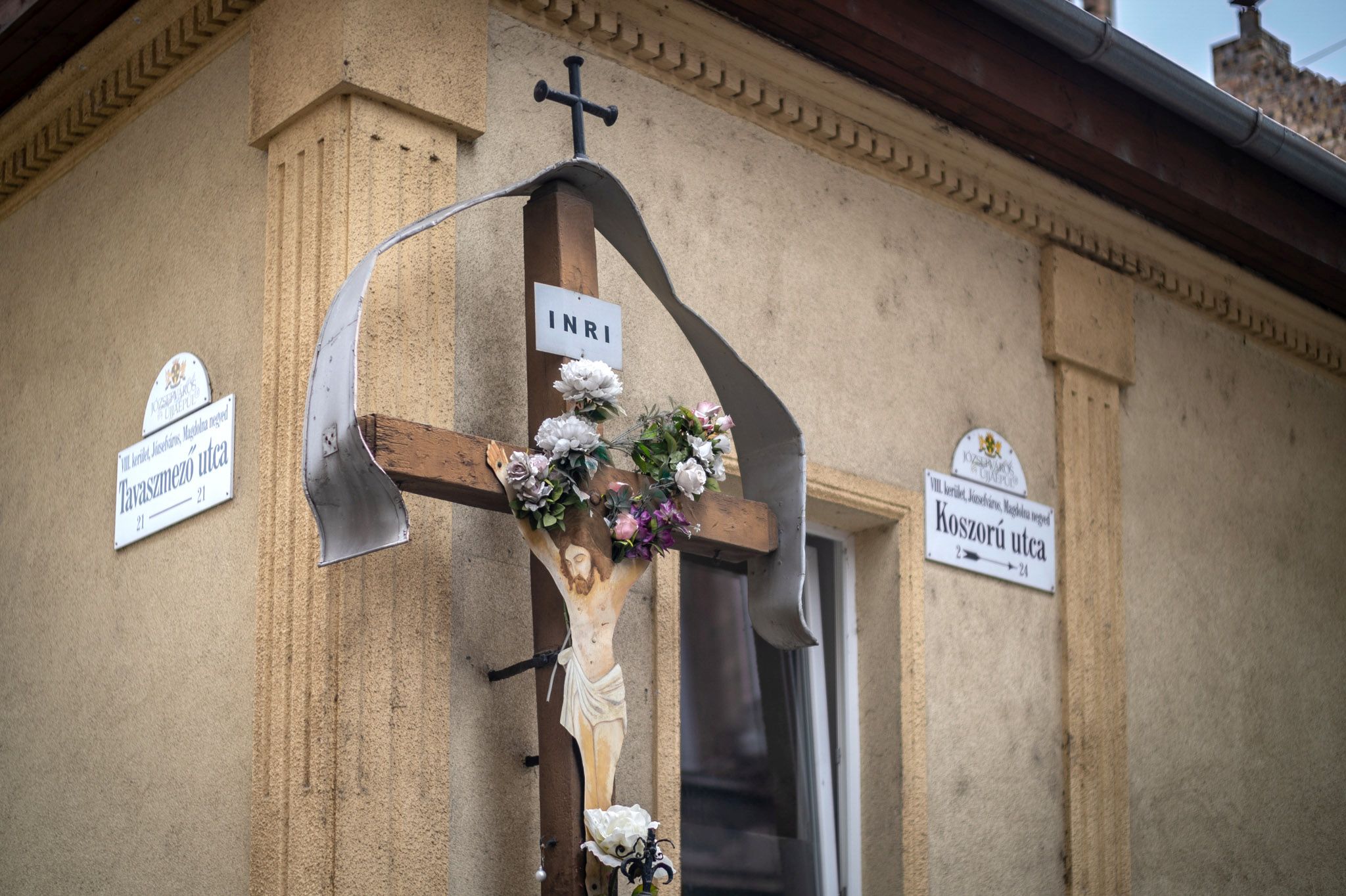 Tin Christ in Józsefváros (Photo: Balázs Both/pestbuda.hu)
Tin Christ in Józsefváros (Photo: Balázs Both/pestbuda.hu)
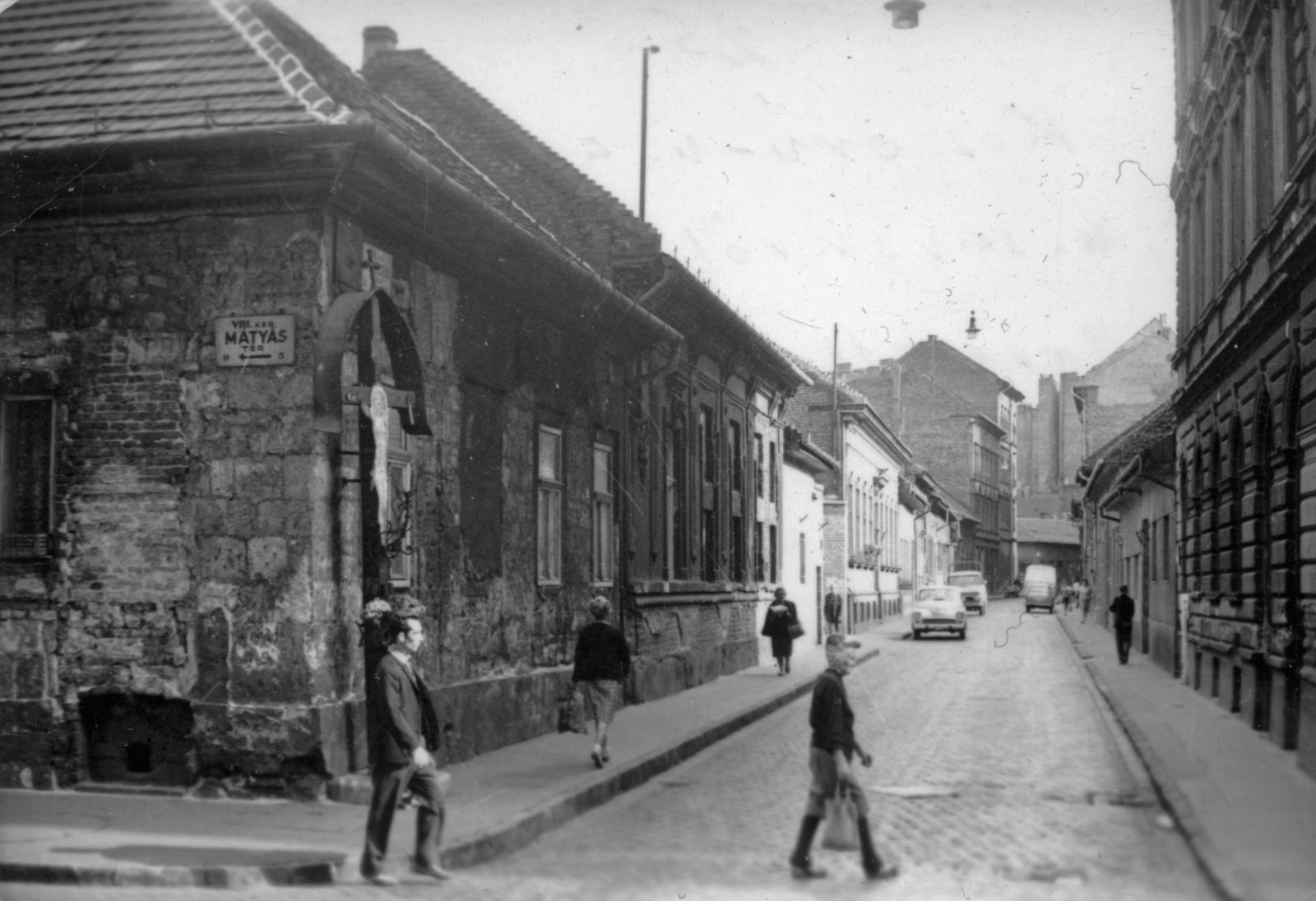
Tin Christ on the corner of Tavaszmező Street and Koszorú Street in 1969 (Photo: Fortepan/No.: 150462)
Compared to the crosses, the Calvaries, i.e. the walking paths depicting the stations of the cross, that is, the Passion of Jesus, are more spectacular marks on the cityscape. These depict Jesus hanging and suffering on the cross and the two thieves crucified with him on Mount Golgotha. Several Calvaries can be found on the Buda side, such as the sacred monuments of Nagytétény, Budafok and Pesthidegkút.
The Calvary of Epreskert in Pest stands out among the Carpathian Basin's monuments with its high artistic quality. The design of the Calvary, which preserves Baroque features, is attributed by art historians to the architect András Mayerhoffer (1690-1771) or to his students. The Calvary originally stood on the outside of Józsefváros, on Kálvária Square. Stáció Street led to this sacred monument from the Pest city centre. In the early 1890s, Stáció Street was renamed Baross Street, and the Calvary was moved to the Epreskert in Terézváros.
The work showcasing the events of Jesus' Passion on Good Friday in the forms of Baroque piety was named the Sorrowful Christ. The sandstone statue once stood near the execution site of Buda, and later, after the construction of the cogwheel railway, it was moved near its terminus in Városmajor.
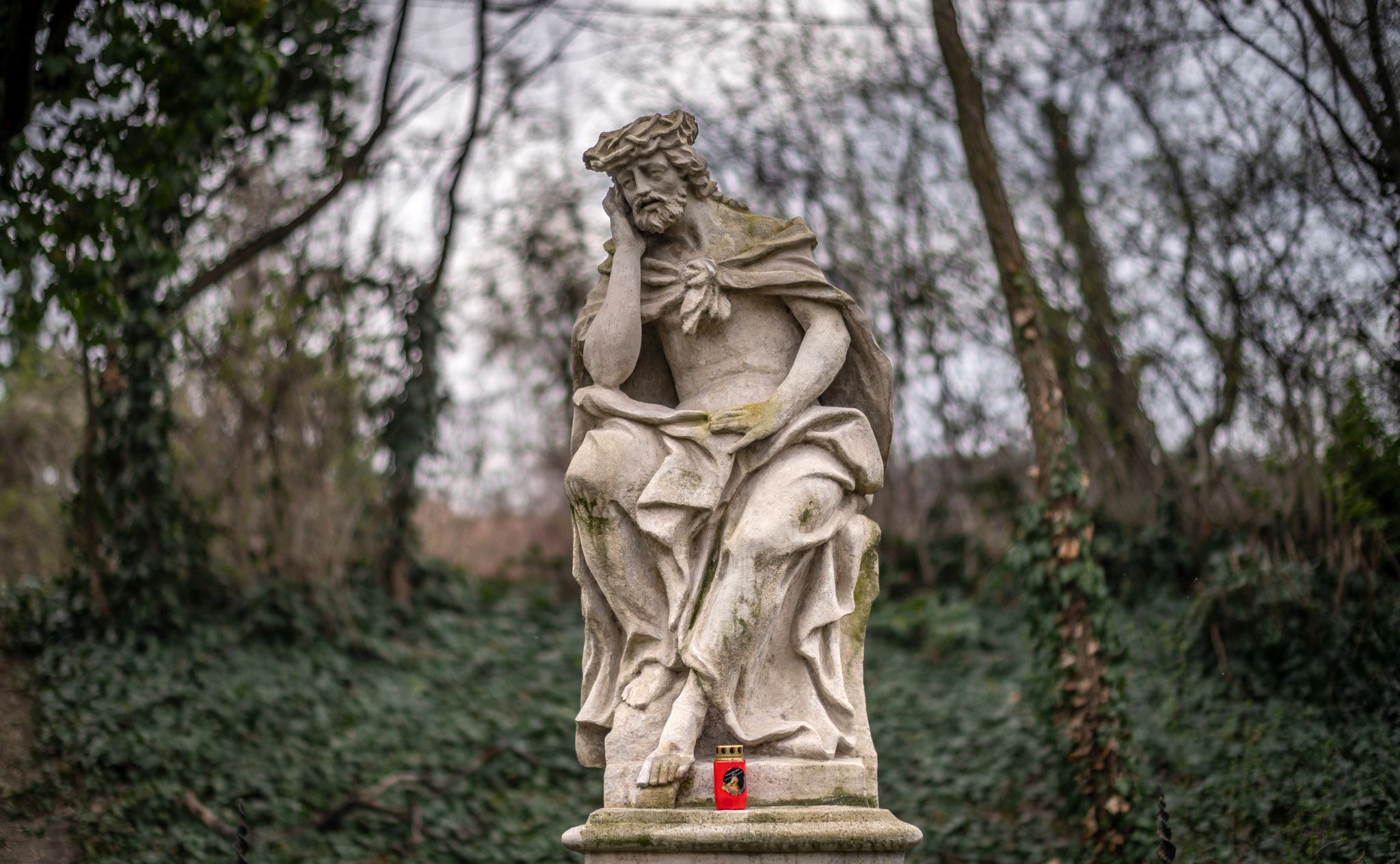
The Sorrowful Christ of Városmajor (Photo: Balázs Both/pestbuda.hu)
Two types of Sorrowful Christ statues are common in Central Europe, standing and sitting. In addition to the one already mentioned, examples of the seated type can also be found in Hungary in Jásztelek, Jászberény, Solymár and Kiskunfélegyháza.
Both types depict the Savior's figure with a crown of thorns and his body covered with the purple cloak given by the soldiers. On the statue next to Szilágyi Erzsébet Avenue, Jesus places his head on one of his hands and awakens pity with his grieving posture.
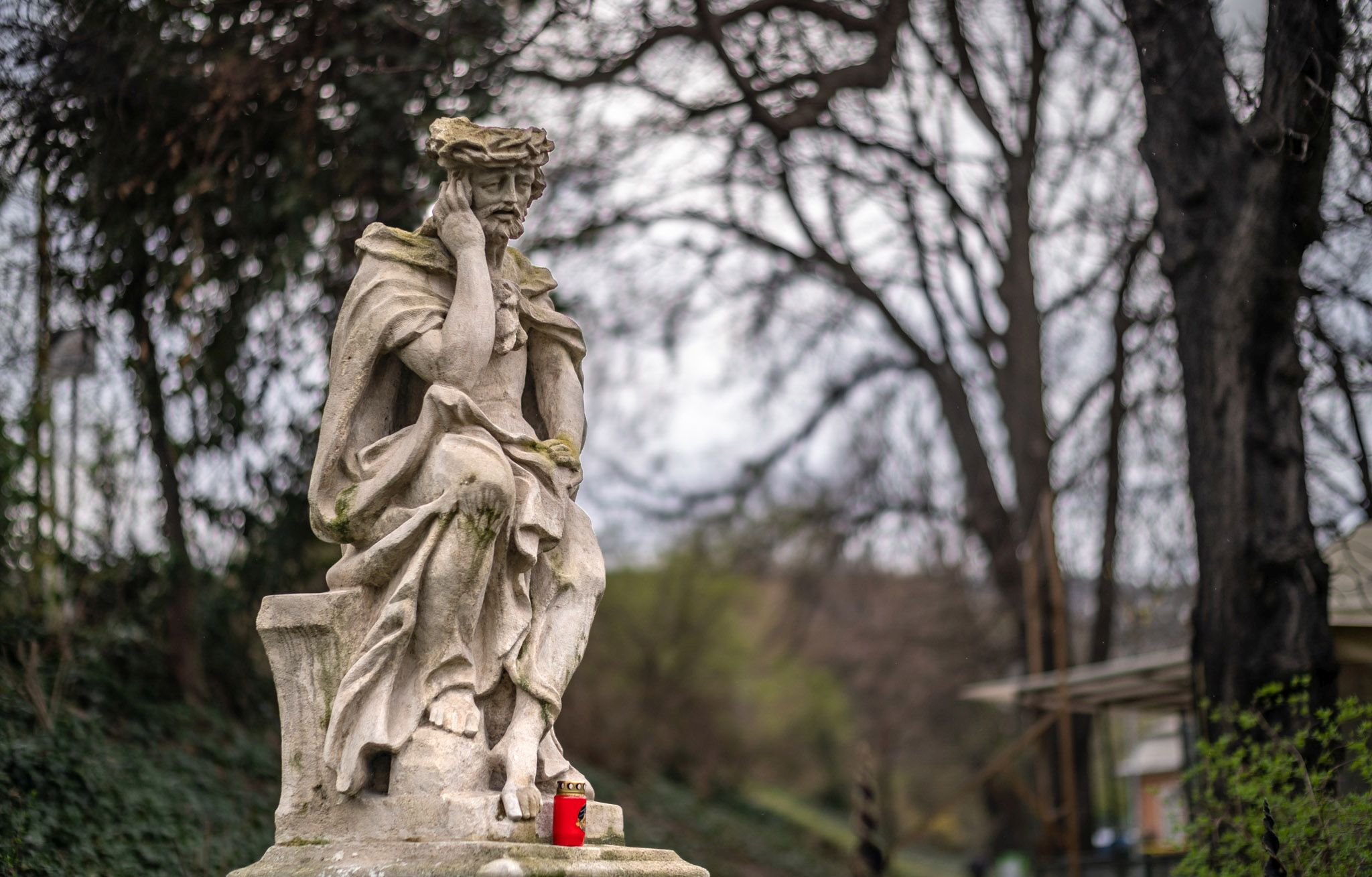
The statue in Városmajor depicts the figure of Christ in the forms of Baroque piety (Photo: Balázs Both/pestbuda.hu)
Although the monument is located near the main road – opposite the Körszálló – the lush vegetation next to the pedestrian promenade ensures that even passers-by can delve a little deeper into the Passion of Jesus.
The parish church of Saint Elizabeth of Hungary, which stands on Rózsák Square in Erzsébetváros, was built between 1893 and 1901 in the neo-Gothic style according to the plans of Imre Steidl (1839–1902). The design of the main façade was completed according to a consciously thought-out programme compiled by the parish priest of Erzsébetváros, István Tóthfalussy (1857–1904). The sculptures were modelled by the sculptor György Kiss (1852–1919) and were made of a durable ceramic, pyrogranite, by the staff of the Zsolnay factory in Pécs.
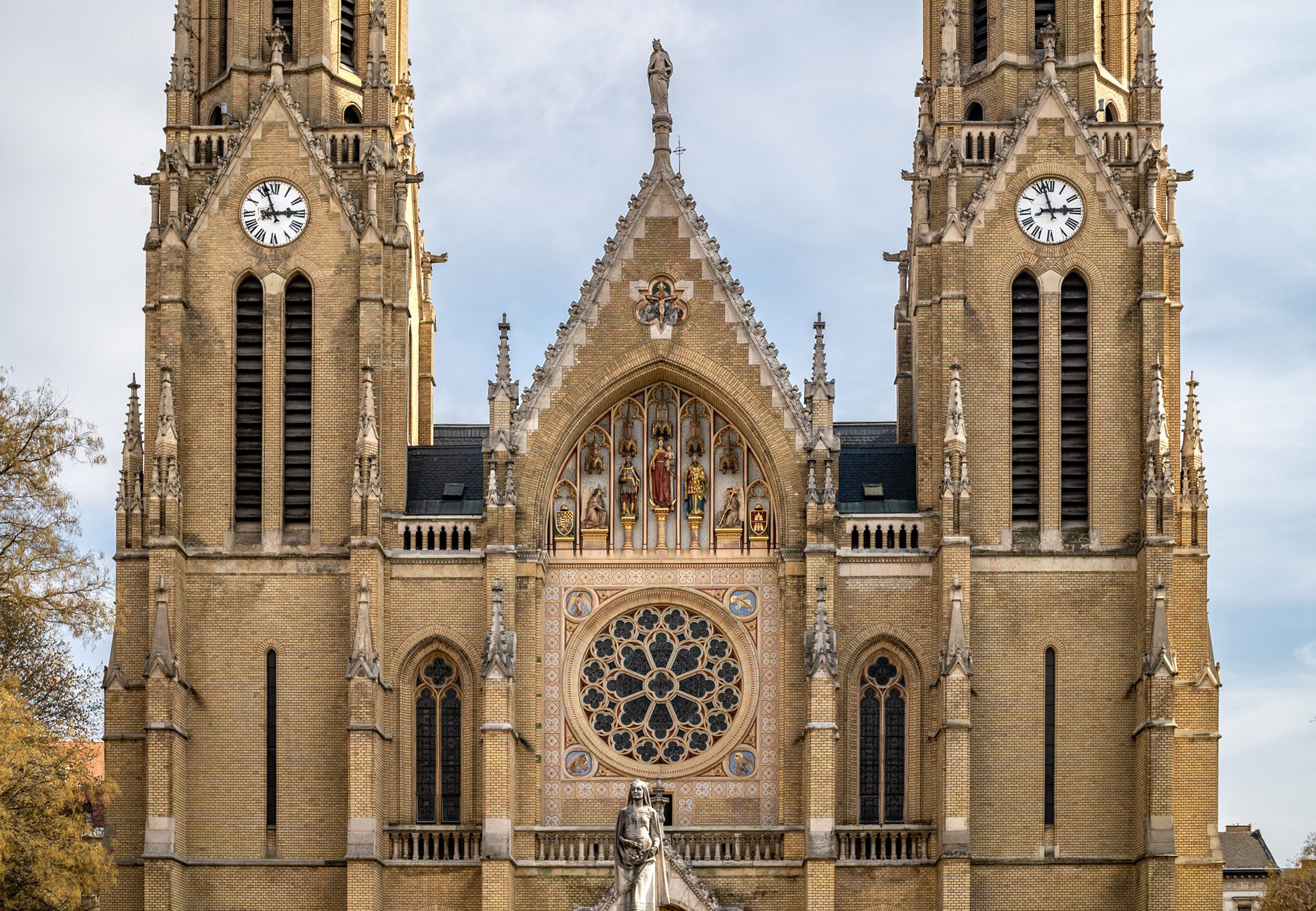
The parish church of St. Elizabeth of Hungary on Rózsák Square (Photo: Balázs Both/pestbuda.hu)
Works related to the life of Jesus and Saint Elizabeth of Hungary appear in a dialogue with each other on the facade. The sculptures of the main facade's central royal gallery, above the main entrance, were created by the sculptor Miklós Köllő (1861–1900). In the middle, highlighted by its larger size, stands a statue of the Virgin Mary as Patrona Hungariae, with the Baby Jesus sitting on her arm. To the left of this statue stands Saint Stephen, and to the right, Saint Ladislaus.
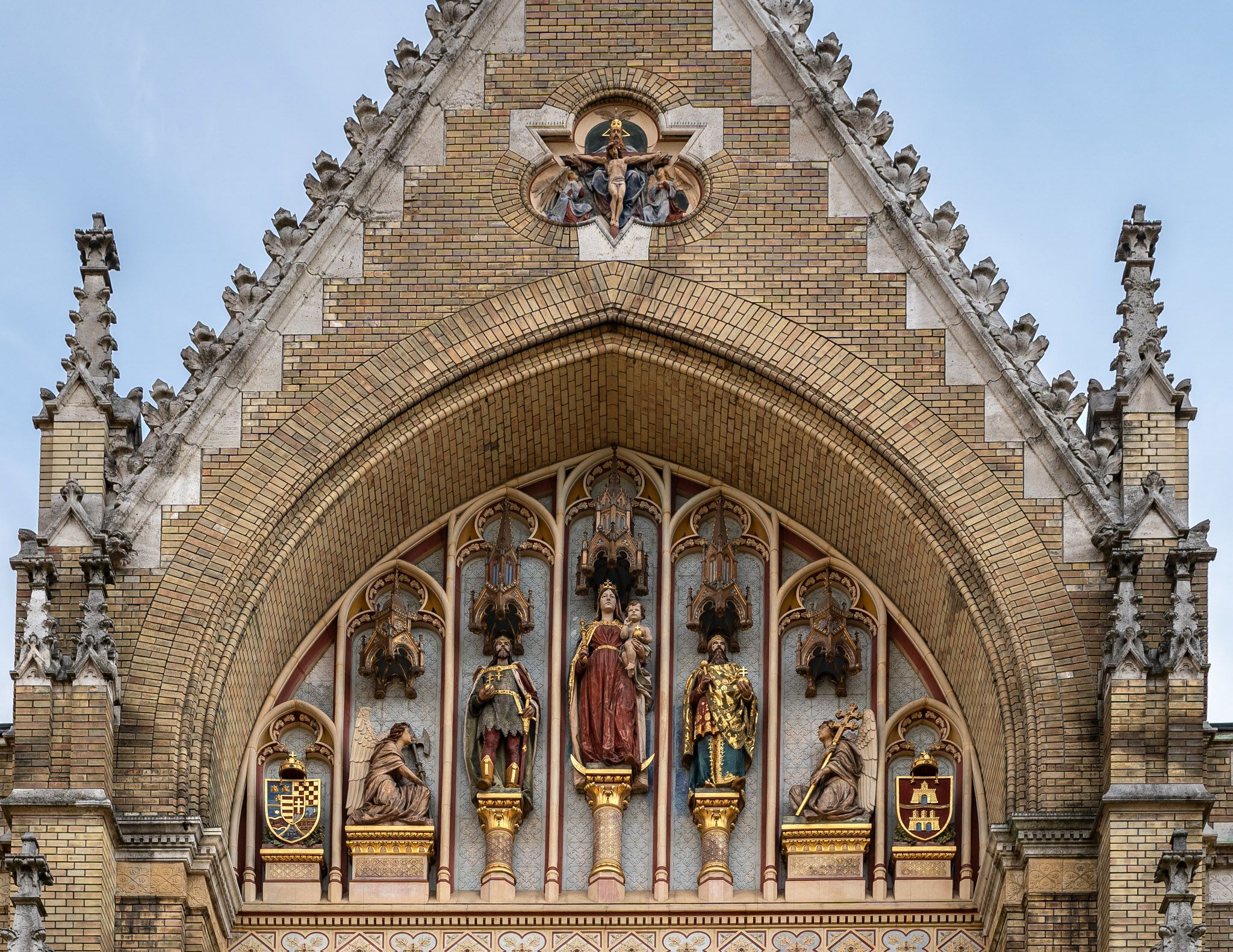
Sculptures of the royal gallery above the main entrance of the main facade (Photo: Balázs Both/pestbuda.hu)
The two Hungarian kings are surrounded by two kneeling angels, holding the attributes of the saints. The edges of the gallery are decorated with the unified coat of arms of the countries of the Hungarian Holy Crown and the coat of arms of the capital. Above the royal gallery, a relief of the Trinity called the Throne of Grace can be seen. At the top of the middle part of the main façade, a full-length, larger-than-life stone sculpture of Saint Elizabeth by the sculptor György Kiss looks down on the square.
With the exception of the entrances to the transept, the statuettes of the tympanums and the rose window were also made of pyrogranite. Around the rose window, a tondo-shaped representation of the symbols of the four evangelists can be found. The depiction of the Throne of Grace on the main facade is a smaller work compared to other sculptural works but stands above the other statue in its theological significance.
While the Hungarian and Roman Catholic values appear simultaneously in the Royal Gallery's monuments, the relief of the Holy Trinity, placed several meters higher in the geometric centre of the main facade, expresses the universality of Christian thought. The work was made of Zsolnay ceramics. The chosen architectural design allows the depiction of the Trinity to be accompanied by two kneeling angels.
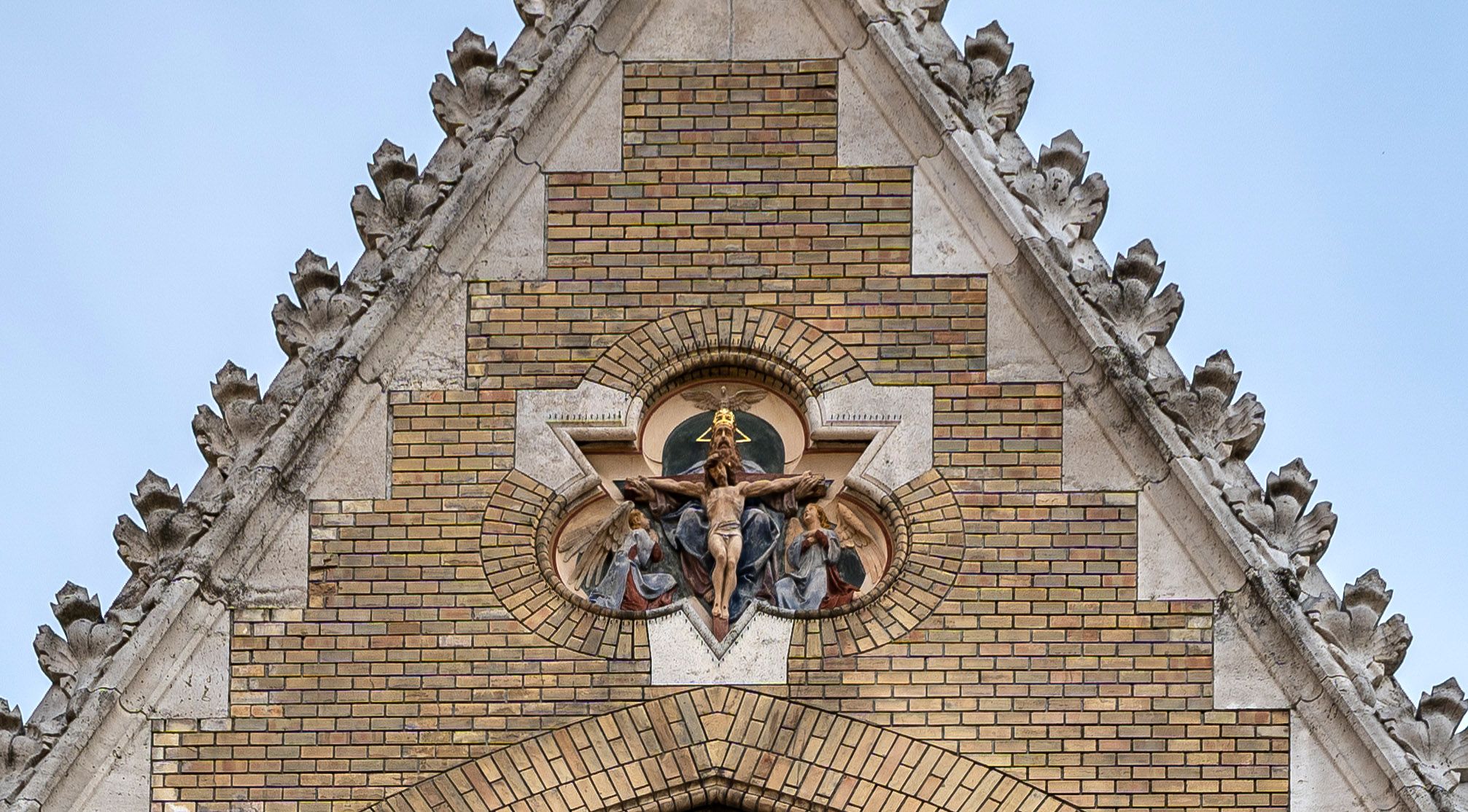
The Throne of Grace representation of the Holy Trinity on the main facade (Photo: Balázs Both/pestbuda.hu)
Depictions of the Throne of Grace became widespread in the second half of the Middle Ages. On these centuries-old Gothic depictions, as on the church on Rózsák Square, God the Father is the actor and is traditionally portrayed as an old, bearded man. Sitting on the throne, the Father gloriously holds on his lap the cross on which Christ hangs crucified. The white dove depicted above the two figures symbolizes the Holy Spirit.
In addition to this type of representation of the Throne of Grace, another version existed in the 15th century, called the painful Holy Trinity. In these representations, the standing God holds his son's dead body in his arms after it has been lifted from the cross.
Mosaics depicting Christ can be found at the entrance to the New Public Cemetery. Budapest's largest cemetery was opened in 1886, as cemeteries were filling quickly due to the rapid increase in the city's population. The regular, geometric floor plan of the New Public Cemetery was created based on the plans of the architect Győző Czigler (1850–1905) at the dawn of the 20th century. The cemetery houses three buildings, including the main entrance, which were completed according to the plans of the architect Ármin Hegedűs (1869-1945).
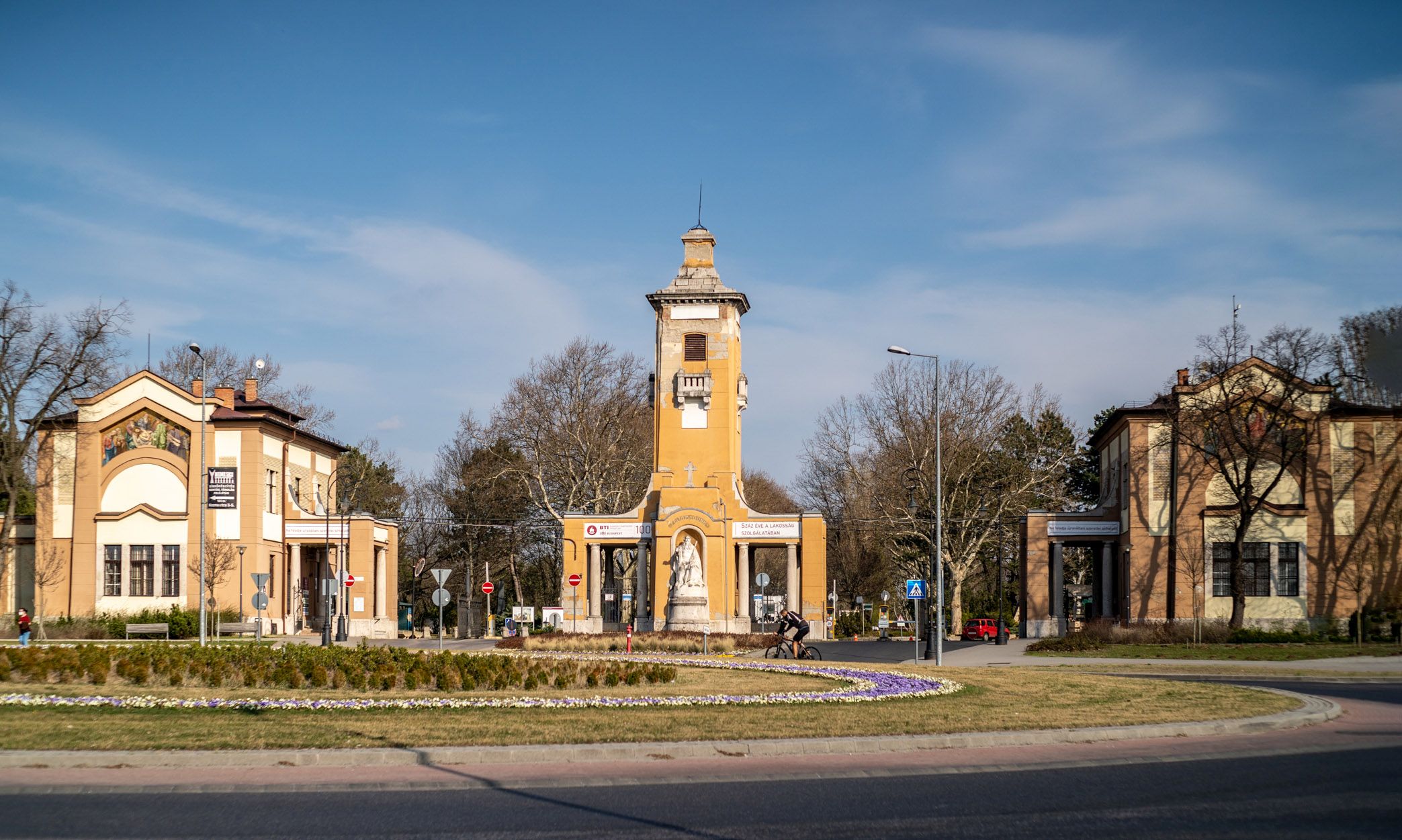
Entrance to the New Public Cemetery (Photo: Balázs Both/pestbuda.hu)
The central gatehouse, which evokes a bell tower, includes a full-length, seated statue of God the Father carved by sculptor Géza Maróti (1875–1941). The facades of the two side buildings facing Kozma Street follow a symmetrical design and large mosaic images. The mosaics with golden backgrounds were made in the workshop of the applied artist Miksa Róth (1865–1944) in Erzsébetváros. The mosaic on the north side depicts the deposition of Christ.
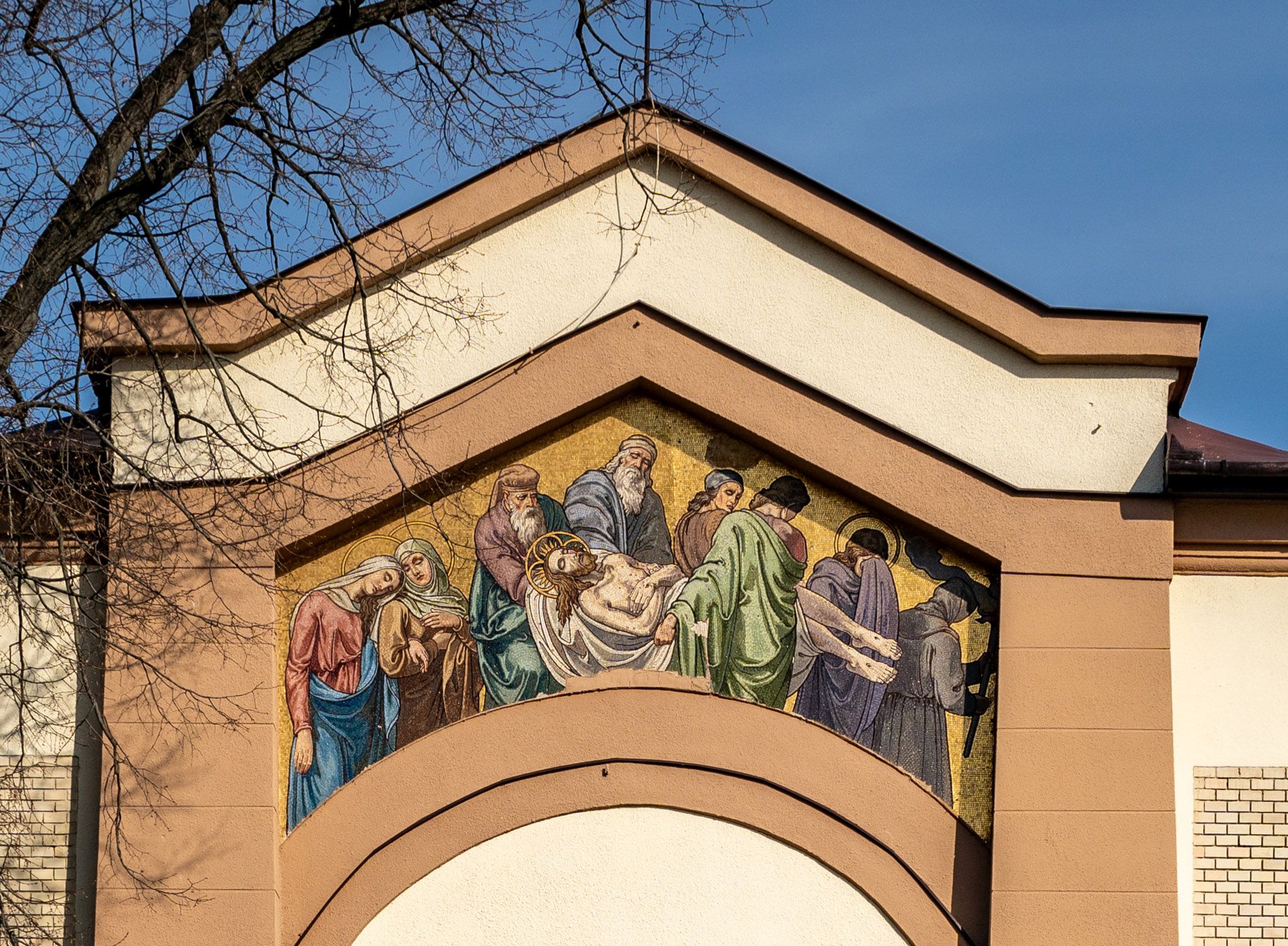
The mosaic depicts the deposition of Christ (Photo: Balázs Both/pestbuda.hu)
The composition is dramatic, with disciples and worshipers mourning their innocently killed master with various gestures. The Savior's head is surrounded by a halo highlighted by the golden rays of the sun. Simpler halos surround two women and a man.
The mosaic adorning the southern building depict the glorious resurrection of Christ: the Savior holds a flag with a cross in his left hand and raises his right in blessing.
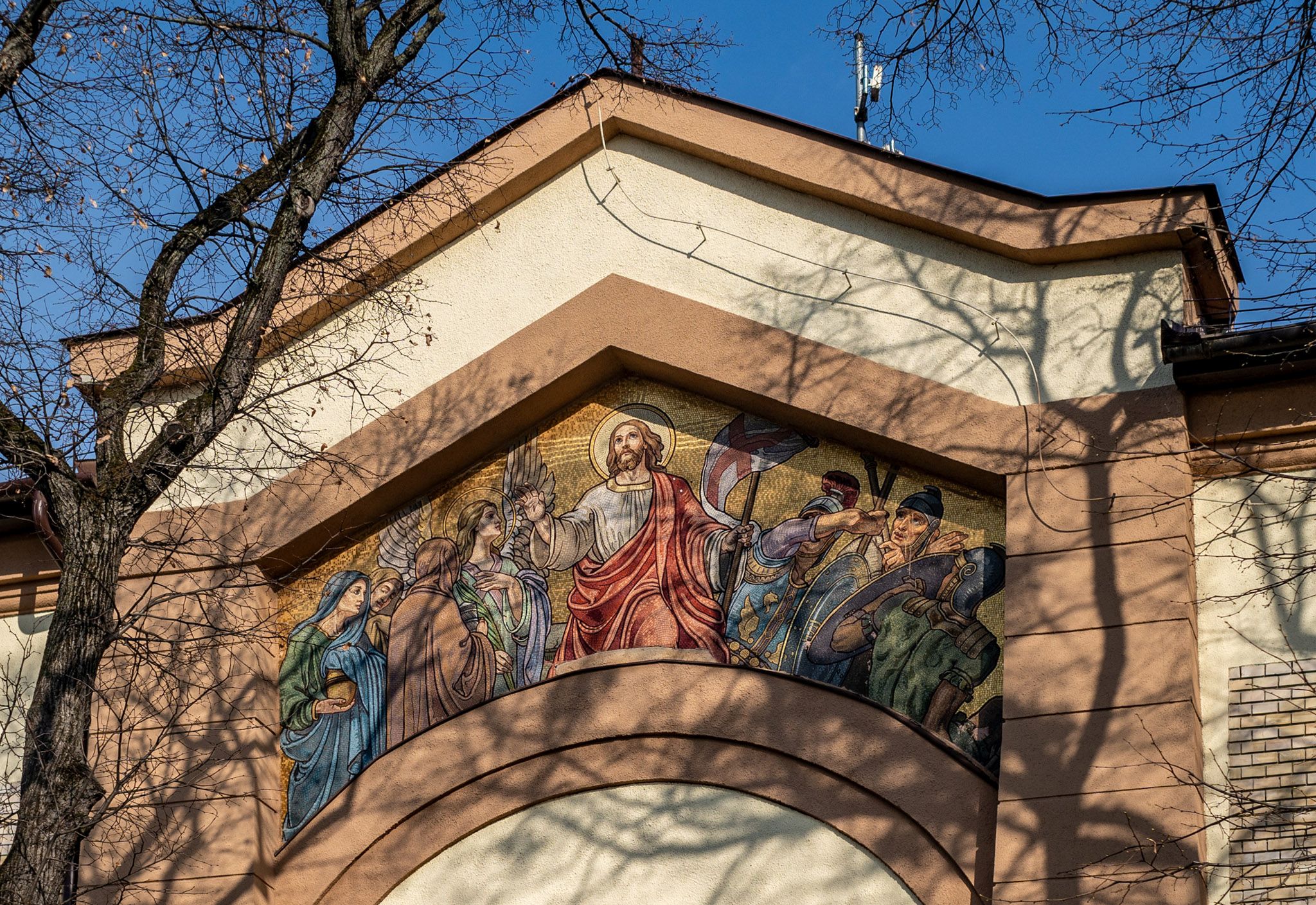
Mosaic depicting the glorious resurrection of Christ (Photo: Balázs Both/pestbuda.hu)
The soldiers guarding the tomb step back scared, trying to cover their faces with their hands and shields. An angel leads the three women who visit the tomb to the risen Savior.
Thus, depictions of the Passion of Christ can be found in several parts of the city, in the form of many representations. On the Feast of the Resurrection, at Easter, the crosses, Calvaries, statues, and mosaics remind us that Jesus Christ suffered and died for us, for our sins, but ultimately he overcame death, was resurrected, bringing hope for all of us.
Cover photo: The mosaic by Miksa Róth depicting the risen Christ at the entrance of the New Public Cemetery (Photo: Balázs Both/pestbuda.hu)

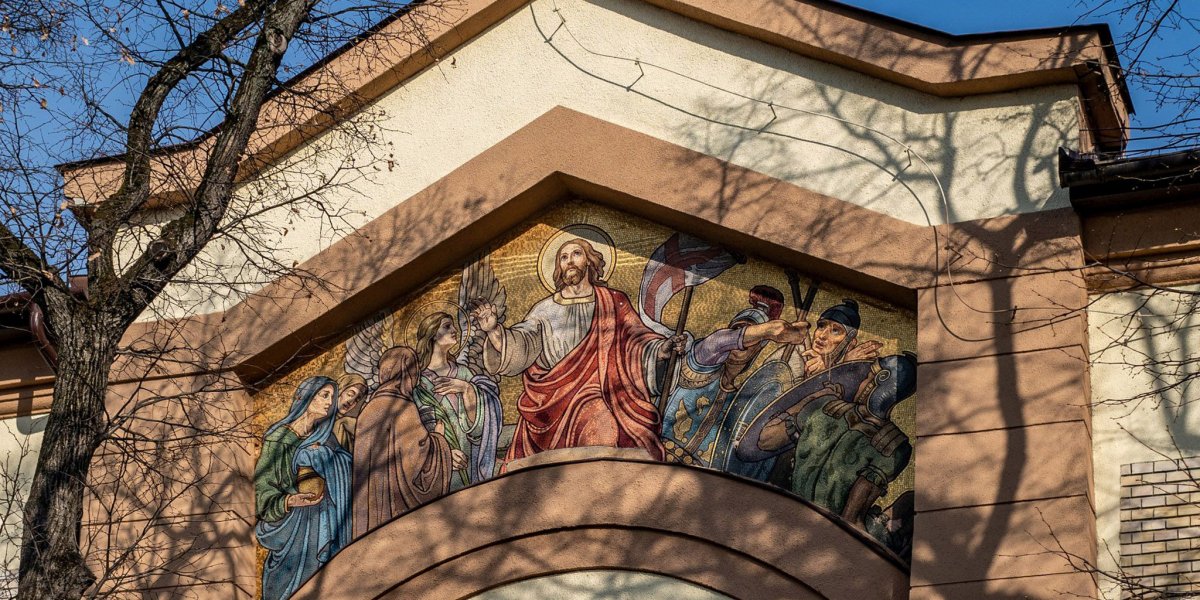

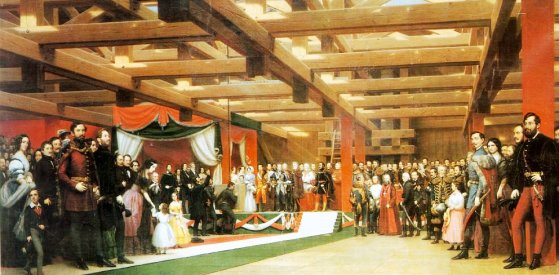
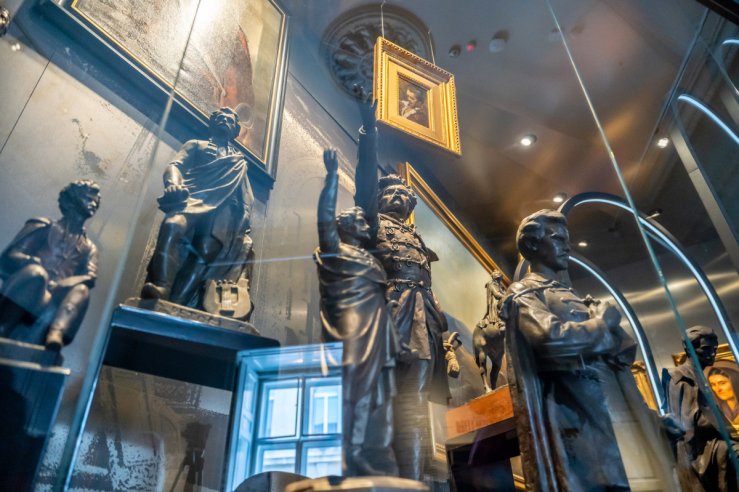
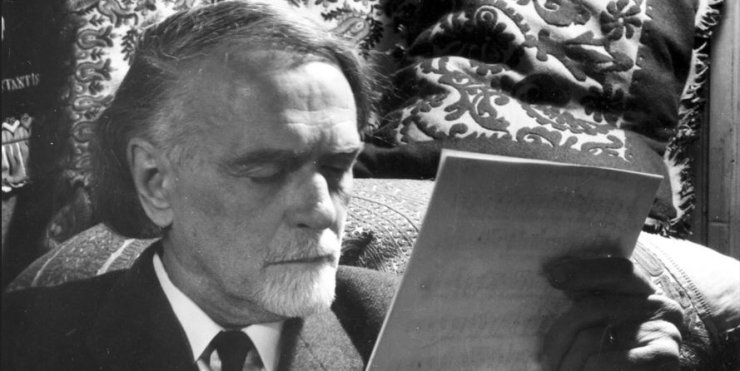

































Hozzászólások
Log in or register to comment!
Login Registration